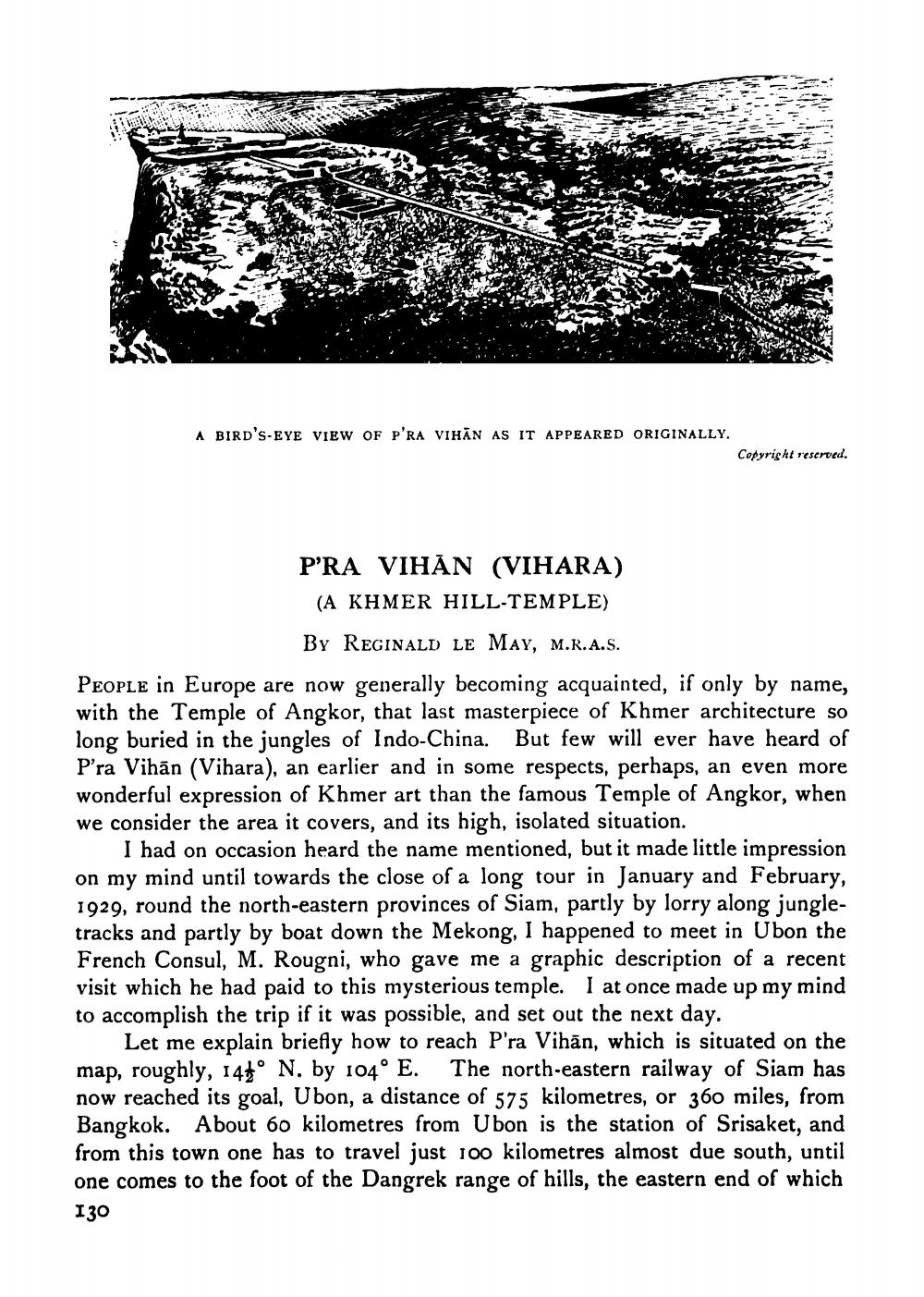________________
A BIRD'S-EYE VIEW OF P'RA VIHĀN AS IT APPEARED ORIGINALLY.
Copyright reserved.
P'RA VIHÂN (VIHARA)
(A KHMER HILL-TEMPLE)
BY REGINALD LE May, M.R.A.S. People in Europe are now generally becoming acquainted, if only by name, with the Temple of Angkor, that last masterpiece of Khmer architecture so long buried in the jungles of Indo-China. But few will ever have heard of P'ra Vihān (Vihara), an earlier and in some respects, perhaps, an even more wonderful expression of Khmer art than the famous Temple of Angkor, when we consider the area it covers, and its high, isolated situation.
I had on occasion heard the name mentioned, but it made little impression on my mind until towards the close of a long tour in January and February, 1929, round the north-eastern provinces of Siam, partly by lorry along jungletracks and partly by boat down the Mekong, I happened to meet in Ubon the French Consul, M. Rougni, who gave me a graphic description of a recent visit which he had paid to this mysterious temple. I at once made up my mind to accomplish the trip if it was possible, and set out the next day.
Let me explain briefly how to reach P'ra Vihān, which is situated on the map, roughly, 147° N. by 104° E. The north-eastern railway of Siam has now reached its goal, Ubon, a distance of 575 kilometres, or 360 miles, from Bangkok. About 60 kilometres from Ubon is the station of Srisaket, and from this town one has to travel just 100 kilometres almost due south, until one comes to the foot of the Dangrek range of hills, the eastern end of which 130




